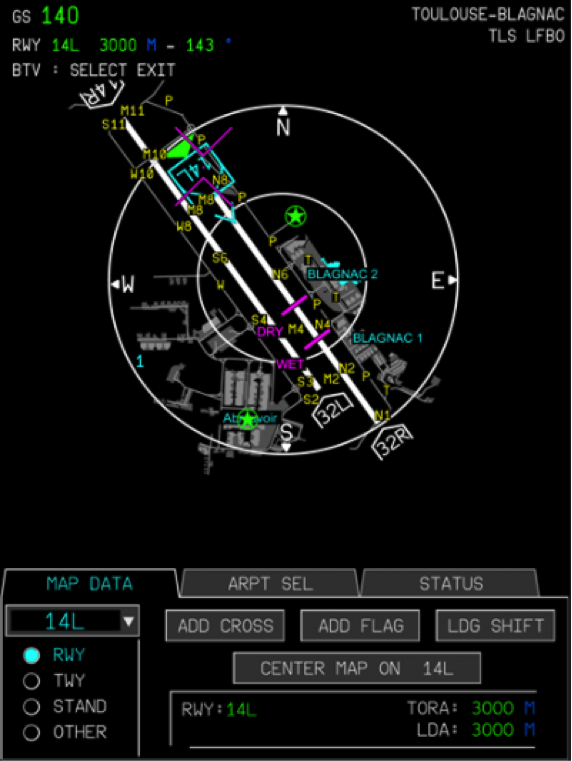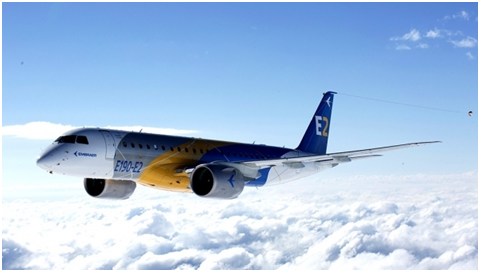Leeham News and Analysis
There's more to real news than a news release.
Bjorn’s corner; Runway safety systems
August 11, 2016, ©. Leeham Co: I recently wrote about the need for Synthetic Vision and other aids to increase the situational awareness of commercial pilots. I asked the OEMs what their plans were for such aids.
One OEM answered that the system will take time until it gets offered as the additional training for the pilots to use the system is not popular with the airlines. It’s hard to monetize a concrete operational benefit for Synthetic Vision systems.
I have now got a slightly different answer from Embraer. Here is what they say.
“Airlines have been prioritizing other options of systems that provide an increase in situational awareness, especially in critical phases of flight, such as the RAAS (Runway Awareness and Advisory System) and the Dual HUD (Head Up Display).
“Nevertheless, Embraer understands the benefits of the synthetic vision system, especially in mountainous areas with a great number of obstacles, areas that frequently face bad weather, or regions with a poor airport and navaids infrastructure.
“As a matter of fact, Embraer is investing in the certification of the SmartView® synthetic vision system (SVS) for both E-Jets and E-Jets E2 platforms. The Honeywell SmartView® synthetic vision system (SVS) is a natural and intuitive depiction of flight symbology and 3D terrain on the primary flight display (PFD). It complements lateral and vertical situational views by synthesizing key flight information.”
So things are moving forward.
Runway protections
Today we will look into some other optional systems that Embraer and other OEMs are working on. RAAS (Runway Awareness and Advisory System) that Embraer is writing about is a system that helps pilots to not make mistakes in their airport navigation.
It’s not obvious but perhaps the most difficult part of a mission can actually be the navigation on the airport before or after the flight, especially for large and complex airports. Look at Figure 2, a map of the Boston Logan Airport.
Imagine that you are parked at Terminal B, Gate B14. Ground Control gives you a clearance to Taxi “Take taxiway Charlie (C) to Mike (M), then to November (N) and hold at November 3 (N3)”. In bad visibility you have to find the correct taxiways, hold and await clearance to pass Runway 22R/4L to get to Mike, turn left and once again hold and get clearance to pass 15R/33L and 15L/33R.
With hundreds of aircraft taxing each day and night, there is every possibility that someone gets something on the back foot. Then imagine the consequences if an aircraft is crossing a runway by mistake when another is landing.
RAAS is normally an extension of an existing collision avoidance system, the Ground Proximity Warning System. It uses a database of all airport maps and GPS to keep check on where the aircraft is and where it’s going. Should a pilot be going the wrong way, it will warn audibly “Approaching runway 22 Right” or “Takeoff on a Taxiway.” The latter is not as crazy as it sounds. In bad visibility, there is not much difference on what one sees of a Runway or a broad Taxiway. Both are long, straight and aligned in the correct bearing.
Another system which I was asked to describe was Airbus Runway Overrun Protection System (ROPS) and Brake to Vacate.
Both build on the fact that the aircraft has a lot of information around the aircraft, its flight status and the airport where one will land. With the ROPS/Brake to Vacate system knowing the aircraft’s configuration, position/speed, weight, wind/temperature and the runway length, it can calculate if the runway is of sufficient length for a landing. If a dry landing would be OK but there would be a problem with a wet runway the system warns “IF WET: RWY TOO SHORT”. On the A350, there is a knob to set the runway condition so there the warning would be “RWY TOO SHORT” if there would be risk of a runway overrun when landing.
After touchdown the system checks the stopping distance with the present brake and thrust reverse levels. If insufficient, it yells/displays; “MAX BRAKING, MAX THRUST REVERSE”.
Brake to Vacate (BTV) is an automatic brake mode in the system that brakes in an optimal fashion to exit on a selected taxiway. Figure 3 is the Flight Management System’s (FMS) page for setting the wanted exit taxiway on Toulouse airport. Landing is on Runway 14L and the magenta lines shows stopping distances with max braking.

Figure 3. Selection of exit taxiway on the FMS “Brake to Vacate” screen. Max brake stopping distances are in magenta. Source: Airbus.
The screen could be from the A380 or A350, which both offer BTV. I used the system to exit at a selected taxiway when I did my landing with A350 MSN002 last April. After touchdown, I activated thrust reverse, the BTV systems then modulated the wheel brakes for me to have 10 knots groundspeed when we approached the selected taxiway. I then took over by touching the brakes and started steering with the nose-wheel Tiller (nose-wheel steering handle) on to the taxiway.
Runway Overrun Protection System is a safety system that should avoid runway overruns. Brake to Vacate is more of a convenience system for the pilot to get off at a certain taxiway with optimal use of the brakes.





A lot of older guys like to say everybody has it easier with current navaids, esp GPS. In my business (off-shore oil, I’m just an ex-private pilot/investor in the aviation business) we couldn’t operate as we are expected to if we didn’t have the technical aids we have. Sometimes advances need some push. Tighter operational limits for non-synthetic vision aircraft might be the way to go. Unfortunately the regulatory approach, which leads much to be desired, is unavoidable.
Short Airbus video demonstrating ROPS with an A380:
https://www.youtube.com/watch?v=9jmnmkeyLe0
Does somebody know what the purple symbols in the video at 1:31 are about?
On the split screen it looks like on the top screen the purple squares are some kind of runway position control. The purple angles at the bottom screen seem to check the flaps?
Are these cameras also for flight safety and not only passengers entertainment?